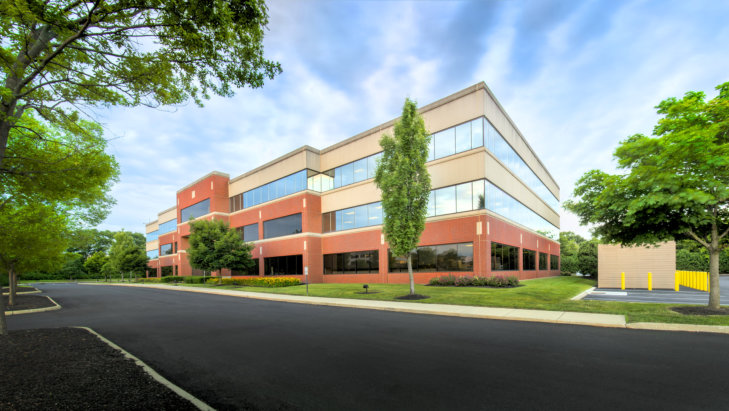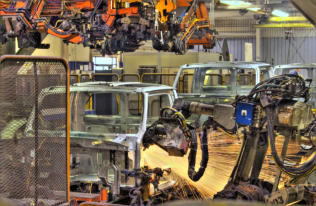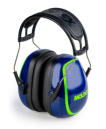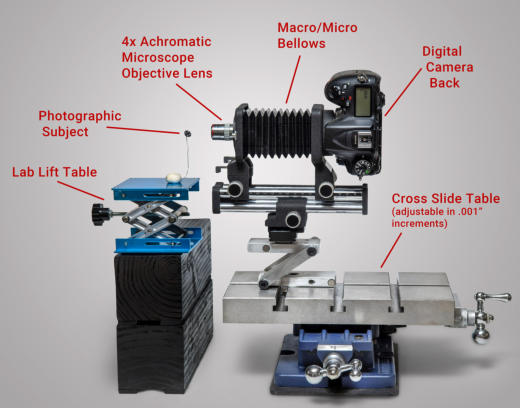630.231.9010
dan@stultzphoto.com
This website and all images © 2024 Dan Stultz/Stultz Photography
Website updated 12/3/24
Dan Stultz is a local commercial photographer, based in West Chicago, serving small businesses and large corporations in the Chicago
area for over 30 years.

Macro/Micro Product Photography FAQ
Do you have questions about macro product photography for manufacturing or
Extreme close up product photography? Here are answers to questions about high
magnification photography from a professional micro photographer.
Images from Stultz Photography are ready for print or web, to your specs. Perfect for catalogs, sell sheets, websites, billboards or trade show displays.
Animated GIFs are available too.
We’ll pick up product or receive your shipments by mail to shoot in our Chicago area photography studio, or we’ll shoot on location.
Turnaround is quick and prices are competitive.
Do you have other questions about Macro Product Photography? Call or click on the email link to tell us about your next project. We’ll respond ASAP.
Click
Looking for macro photography of your very small products?
Stultz Photography can provide exteme macro and micro photography of the tiniest objects.Standard Micro photography setup
What is difference between macro and micro photography?
Why would I need macro or micro product photos?
What are the challenges of macro photography?
How do you get such sharp focus?
What makes a good macro photograph?
Why don’t more photographers do macro and micro photography?
How close can you get with macro photography?
What subjects lend themselves to Macro and Micro Photography?
What setup and equipment do you use in your macro and mico photography?
What is difference between macro and micro photography?
• Macro photography uses a magnification ratio of 1:1 or higher, which means the subject appears life- sized or larger on the camera's sensor. In other words, if the subject is one inch wide, it will be one inch wide on the camera sensor. • Micro photography photography uses even greater magnification of 1:2 and more.Why would I need macro or micro product photos?
• If your product is very small, and it’s difficult to see it’s manufacturing quality or characteristics, then you need macro photography. • if a small detail of a larger product is important to see and understand, you need macro photography • If a product is too small to see much at all, you need micro photography. back to topWhat are the challenges of macro photography?
• The biggest challenge is extremely shallow depth of field: In macro photography, we always get a very narrow, almost razor-thin depth of field, which is often not acceptable. Sometimes the fall off from sharp to out of focus can be pleasant and show important details. But often you want to see more in focus to see more in vivid detail. Click to read about my solution to this problem. • The macro and micro world has a lot of detail that the human eye cannot see, but the lens can. Microscopic scratches, dust and others flaws can be a problem to overcome in Macro and micro photography. back to topHow do you get such sharp focus?
• Macro photography is cursed by the laws of physics with extremely shallow depth of field. Because of these laws, only a narrow plane of the image will be in sharp focus. When the front is in sharp focus, the rest is extremely out of focus. Fortunately, clever hacks with digital processing can make a photo that brings the subject in totally sharp focus throughout. We use multiple images (as many as a hundred) with progressive changes in focus, then stack them in special software to create one image that is fully sharp front to back. We call this process Focus Stacking– “a digital image processing technique that combines multiple images taken at different focus points to create a single image with a greater depth of field.” back to topWhat makes a good macro photograph?
• Composition in any photo is important– Does your eye automatically go to an important part of the subject? Are there any distractions in the photo that take away from the overall impact? • Lighting– To achieve good composition, you need good lighting. Macro lighting is trickier because of the size of the subject, but it is no less important. Good lighting will make the subject more interesting. • Sharpness or creative use of narrow focus– The technique of photo stacking can bring the entire subject into sharp focus. But sometimes selective use of focus can draw attention to important details in the photo. • Texture– Good lighting will show the beautiful texture of your product. • Cleanliness– the macro world is very dusty! As you move through the macro and micro world you begin to see things through the lens that you cannot see with your eye. That includes dust and scratches. The item must be cleaned well and polished if possible. Any flaw will be seen. Of course, these blemishes can be removed with retouching, but that ads to the cost and time.Why don’t more photographers do macro and micro photography?
• It’s very difficult. • You need specialized equipment and software and it’s expensive! I have built an extensive collection of macro and micro lenses, focusing sliders and fiber optic lighting as well as special software to combine many images into one. See the photo of my micro setup below. • You need lots of patience. I sometimes need to take 60-100 images in focusing increments of one thousandth of an inch to get a completely sharp image. • You need skill. I’ve been doing this for a while and have built the experience necessary to provide macro and micro product photography. back to topHow close can you get with macro photography?
• The eye of a needle, the texture of sandpaper the tip of a ball point pen. See these examples of just how close I can get. back to topWhat subjects lend themselves to Macro and Micro Photography?
• Any product that is extremely small or has detailed or intricate design features calls for macro photography. The following types of products photograph well with a macro: o Electronic Parts and Supplies o Small Industrial Tools and Cutters o Small Automotive Parts o Medical Devices o Small Parts of Any Kind o Small Details and Textures of Larger Products o Miniature products o Jewelry back to topWhat setup and equipment do you use in your macro and mico photography?
• Here’s a photo of a typical setup fo micro photography.









Product Macro 360 Spin
Food Ecommerce Executive Headshot Industrial Architectural



630.231.9010
dan@stultzphoto.com
1227 Elizabeth St., West Chicago, IL 60185
This website and all images © 2024 Dan Stultz/Stultz Photography. Website last updated 11/12/24Serving: Illinois, DuPage County, Chicago Area, Elmhurst,
Addison, Naperville, Wheaton, Aurora, Elgin, West Chicago
Macro/Micro Product Photography FAQ
Images from Stultz Photography are ready for print or web, to
your specs. Perfect for catalogs, sell sheets, websites,
billboards or trade show displays. Animated GIFs are available
too.
We’ll pick up product or receive your shipments by mail to
shoot in our Chicago area photography studio, or we’ll shoot
on location.
Turnaround is quick and prices are competitive.
Do you have other questions about Macro Product
Photography? Call or click on the email link to tell us about
your next project. We’ll respond ASAP. Click
What is difference between macro and micro photography?
Why would I need macro or micro product photos?
What are the challenges of macro photography?
How do you get such sharp focus?
What makes a good macro photograph?
Why don’t more photographers do macro and micro photography?
How close can you get with macro photography?
What subjects lend themselves to Macro and Micro Photography?
What setup and equipment do you use in your macro and mico
photography?
What is difference between macro and
micro photography?
• Macro photography uses a magnification ratio of 1:1 or higher, which means the subject appears life-sized or larger on the camera's sensor. In other words, if the subject is one inch wide, it will be one inch wide on the camera sensor. • Micro photography photography uses even greater magnification of 1:2 and more.Why would I need macro or micro product
photos?
• If your product is very small, and it’s difficult to see it’s manufacturing quality or characteristics, then you need macro photography. • if a small detail of a larger product is important to see and understand, you need macro photography • If a product is too small to see much at all, you need micro photography. back to topWhat are the challenges of macro
photography?
• The biggest challenge is extremely shallow depth of field: In macro photography, we always get a very narrow, almost razor-thin depth of field, which is often not acceptable. Sometimes the fall off from sharp to out of focus can be pleasant and show important details. But often you want to see more in focus to see more in vivid detail. Click to read about my solution to this problem. • The macro and micro world has a lot of detail that the human eye cannot see, but the lens can. Microscopic scratches, dust and others flaws can be a problem to overcome in Macro and micro photography. back to topHow do you get such sharp focus?
• Macro photography is cursed by the laws of physics with extremely shallow depth of field. Because of these laws, only a narrow plane of the image will be in sharp focus. When the front is in sharp focus, the rest is extremely out of focus. Fortunately, clever hacks with digital processing can make a photo that brings the subject in totally sharp focus throughout. We use multiple images (as many as a hundred) with progressive changes in focus, then stack them in special software to create one image that is fully sharp front to back. We call this process Focus Stacking– “a digital image processing technique that combines multiple images taken at different focus points to create a single image with a greater depth of field.” back to topWhat makes a good macro photograph?
• Composition in any photo is important– Does your eye automatically go to an important part of the subject? Are there any distractions in the photo that take away from the overall impact? • Lighting– To achieve good composition, you need good lighting. Macro lighting is trickier because of the size of the subject, but it is no less important. Good lighting will make the subject more interesting. • Sharpness or creative use of narrow focus– The technique of photo stacking can bring the entire subject into sharp focus. But sometimes selective use of focus can draw attention to important details in the photo. • Texture– Good lighting will show the beautiful texture of your product. • Cleanliness– the macro world is very dusty! As you move through the macro and micro world you begin to see things through the lens that you cannot see with your eye. That includes dust and scratches. The item must be cleaned well and polished if possible. Any flaw will be seen. Of course, these blemishes can be removed with retouching, but that ads to the cost and time.Why don’t more photographers do macro
and micro photography?
• It’s very difficult. • You need specialized equipment and software and it’s expensive! I have built an extensive collection of macro and micro lenses, focusing sliders and fiber optic lighting as well as special software to combine many images into one. See the photo of my micro setup below. • You need lots of patience. I sometimes need to take 60- 100 images in focusing increments of one thousandth of an inch to get a completely sharp image. • You need skill. I’ve been doing this for a while and have built the experience necessary to provide macro and micro product photography. back to topHow close can you get with macro
photography?
• The eye of a needle, the texture of sandpaper the tip of a ball point pen. See these examples of just how close I can get. back to topWhat subjects lend themselves to Macro
and Micro Photography?
• Any product that is extremely small or has detailed or intricate design features calls for macro photography. The following types of products photograph well with a macro: o Electronic Parts and Supplies o Small Industrial Tools and Cutters o Small Automotive Parts o Medical Devices o Small Parts of Any Kind o Small Details and Textures of Larger Products o Miniature products o Jewelry back to topWhat setup and equipment do you use in
your macro and mico photography?
• Here’s a photo of a typical setup fo micro photography.Looking for macro photography of your very
small products?
Stultz Photography can provide exteme macro and micro photography of the tiniest objects.Do you have questions about macro product photography for
manufacturing or Extreme close up product photography? Here
are answers to questions about high magnification photography
from a professional micro photographer.
Product Macro 360 Spin
Food Ecommerce
Executive Headshot Industrial Architectural



630.231.9010
dan@stultzphoto.com
1227 Elizabeth St., West Chicago, IL 60185
This website and all images © 2024 Dan Stultz/Stultz Photography Website last updated 11/12/24Serving: Illinois, DuPage County, Chicago Area, Elmhurst, Addison, Naperville, Wheaton, Aurora, Elgin,
West Chicago
Macro/Micro Product Photography FAQ
Looking for macro photography of your very small products?
Stultz Photography can provide exteme macro and micro photography of the tiniest objects.
Images from Stultz Photography are ready for print or web, to your specs. Perfect for catalogs, sell sheets, websites,
billboards or trade show displays. Animated GIFs are available too.
We’ll pick up product or receive your shipments by mail to shoot in our Chicago area photography studio, or we’ll
shoot on location.
Turnaround is quick and prices are competitive.
Do you have other questions about Macro Product Photography? Call or click on the email link to tell us about your
next project. We’ll respond ASAP. Click
Do you have questions about macro product photography for manufacturing or
Extreme close up product photography? Here are answers to questions about high
magnification photography from a professional micro photographer.
What is difference between macro and micro photography?
Why would I need macro or micro product photos?
What are the challenges of macro photography?
How do you get such sharp focus?
What makes a good macro photograph?
Why don’t more photographers do macro and micro photography?
How close can you get with macro photography?
What subjects lend themselves to Macro and Micro Photography?
What setup and equipment do you use in your macro and mico photography?
What is difference between macro and micro photography?
• Macro photography uses a magnification ratio of 1:1 or higher, which means the subject appears life-sized or larger on the camera's sensor. In other words, if the subject is one inch wide, it will be one inch wide on the camera sensor. • Micro photography photography uses even greater magnification of 1:2 and more.Why would I need macro or micro product photos?
• If your product is very small, and it’s difficult to see it’s manufacturing quality or characteristics, then you need macro photography. • if a small detail of a larger product is important to see and understand, you need macro photography • If a product is too small to see much at all, you need micro photography. back to topWhat are the challenges of macro photography?
• The biggest challenge is extremely shallow depth of field: In macro photography, we always get a very narrow, almost razor-thin depth of field, which is often not acceptable. Sometimes the fall off from sharp to out of focus can be pleasant and show important details. But often you want to see more in focus to see more in vivid detail. Click to read about my solution to this problem. • The macro and micro world has a lot of detail that the human eye cannot see, but the lens can. Microscopic scratches, dust and others flaws can be a problem to overcome in Macro and micro photography. back to topHow do you get such sharp focus?
• Macro photography is cursed by the laws of physics with extremely shallow depth of field. Because of these laws, only a narrow plane of the image will be in sharp focus. When the front is in sharp focus, the rest is extremely out of focus. Fortunately, clever hacks with digital processing can make a photo that brings the subject in totally sharp focus throughout. We use multiple images (as many as a hundred) with progressive changes in focus, then stack them in special software to create one image that is fully sharp front to back. We call this process Focus Stacking– “a digital image processing technique that combines multiple images taken at different focus points to create a single image with a greater depth of field.” back to topWhat makes a good macro photograph?
• Composition in any photo is important– Does your eye automatically go to an important part of the subject? Are there any distractions in the photo that take away from the overall impact? • Lighting– To achieve good composition, you need good lighting. Macro lighting is trickier because of the size of the subject, but it is no less important. Good lighting will make the subject more interesting. • Sharpness or creative use of narrow focus– The technique of photo stacking can bring the entire subject into sharp focus. But sometimes selective use of focus can draw attention to important details in the photo. • Texture– Good lighting will show the beautiful texture of your product. • Cleanliness– the macro world is very dusty! As you move through the macro and micro world you begin to see things through the lens that you cannot see with your eye. That includes dust and scratches. The item must be cleaned well and polished if possible. Any flaw will be seen. Of course, these blemishes can be removed with retouching, but that ads to the cost and time.Why don’t more photographers do macro and micro photography?
• It’s very difficult. • You need specialized equipment and software and it’s expensive! I have built an extensive collection of macro and micro lenses, focusing sliders and fiber optic lighting as well as special software to combine many images into one. See the photo of my micro setup below. • You need lots of patience. I sometimes need to take 60-100 images in focusing increments of one thousandth of an inch to get a completely sharp image. • You need skill. I’ve been doing this for a while and have built the experience necessary to provide macro and micro product photography. back to topHow close can you get with macro photography?
• The eye of a needle, the texture of sandpaper the tip of a ball point pen. See these examples of just how close I can get. back to topWhat subjects lend themselves to Macro and Micro Photography?
• Any product that is extremely small or has detailed or intricate design features calls for macro photography. The following types of products photograph well with a macro: o Electronic Parts and Supplies o Small Industrial Tools and Cutters o Small Automotive Parts o Medical Devices o Small Parts of Any Kind o Small Details and Textures of Larger Products o Miniature products o Jewelry back to topWhat setup and equipment do you use in your macro and mico
photography?
• Here’s a photo of a typical setup fo micro photography.
Extremely shallow depth of field in a
single image.
Final image with 15 different
images stacked into one.









Product Macro 360 Spin
Food Ecommerce Executive Headshot Industrial Architectural































